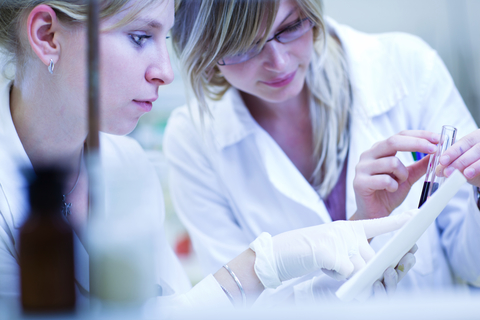Artificial mouse embryos created in the lab

Artificial mouse embryos grown from stem cells in a dish could help unlock secrets of early development and infertility (New Scientist, 2017).
Magdalena Zernicka-Goetz at the University of Cambridge and her team made the embryos using embryonic stem cells, the type of cells found in embryos that can mature into any type of tissue in the body. They grew these alongside trophoblast stem cells, which normally produce the placenta. By growing these two types of cell separately and then combining them in a special gel matrix, the two mixed and started to develop together.
After around four and a half days, the embryos resembled normal mouse embryos that were about to start differentiating into different body tissues and organs. Magdalena Zernicka-Goetz said “They are very similar to natural mouse embryos. We put the two types of stem cells together – which has never been done before – to allow them to speak to each other. We saw that the cells could self-organise themselves without our help.”
This is the first time something resembling an embryo has been made from stem cells, without using an egg in some way. Techniques such as cloning bypass the need for sperm but still require an egg cell.
Magdalena Zernicka-Goetz said the artificial embryos are providing new insights into how embryos organise themselves and grow. The team engineered the artificial embryos so the cell types fluoresced in different colours, to reveal their movements and behaviour as the embryos go through crucial changes.
Mammal embryos were already known to start as a symmetrical ball, then elongate, form a central cavity and start developing a type of cell layer called mesoderm, which ultimately goes on to form bone and muscle.
Magdalena Zernicka-Goetz said “We didn’t know before how embryos form this cavity, but we’ve now found the mechanism for it and the sequential steps by which it forms. It’s building up the foundations for the whole body plan.”
Leonard Zon at Boston Children’s Hospital, Massachusetts, said “The work is a great addition to the stem cell field and could be extended to human stem cell populations. Using the system, the factors that participate in embryo development could be better studied and this could help us understand early events of embryogenesis.”
But Robin Lovell-Badge at the Francis Crick Institute said the embryos lack two other types of cell layer required to develop the bodies’ organs; ectoderm, which forms skin and the central nervous system, and endoderm, which makes internal organs. Magdalena Zernicka-Goetz hopes to see these types of cell layers develop in future experiments by adding stem cells that normally form the yolk sac, a third structure involved in embryonic development, to the mix.
If a similar feat can be achieved using human stem cells, this could reveal a lot about the earliest stages of human development. Current research is limited by the number of excess embryos that are donated from IVF procedures. But the new technique could produce a limitless supply, making it easier to conduct in-depth research. These artificial embryos may also be easier to tinker with, to see what effect different factors have in early embryogenesis.
Disrupting development in this way may provide new insights into the causes of abnormal embryo development and miscarriage. Magdalena Zernicka-Goetz said “You would be able to understand the principles that govern each stage of development. These are not normally accessible, because they happen inside the mother.”
It is unlikely this work could ever lead to fully grown babies in the lab. Robin Lovell-Badge said the artificial embryos are unlikely to develop in vitro much further than shown in the study, as they would soon need the supply of nutrients and oxygen that a placenta normally channels from the mother.
Magdalena Zernicka-Goetz said “We’re not planning to make a mouse in the lab using stem cells.” But she is hopeful that adding yolk sac stem cells will allow these artificial embryos to survive long enough to study the beginnings of organs like the heart.








